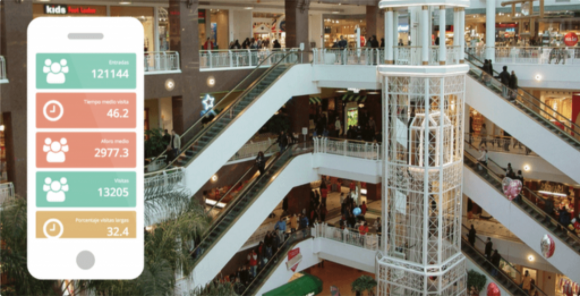
Shopping mall owners: it’s time to get immersed on visitor analytics

On today’s post, we’re sharing with you how useful are visitor analytics tools for shopping mall owners and 5 key points to know how they use them to implement changes in their operations. These solutions provide huge amounts of data about visitors and retailers, and it is key to take them into account on management decisions.
So, these tools make shopping malls’ management easier and complex at the same time. On the one hand, management is easier because they are able to better understand visitor’s behavior and have access to a deeper knowledge on mall’s performance at different levels. And on the other hand, management becomes more complex as having more information implies thinking about a larger set of questions and coming across more areas of improvement.
Now, let’s see what are these visitor analytics tools. Shopping mall owners have footfall traffic information thanks to Automatic People Counters and other solutions like Wifi Tracking. They are able to understand visitor’s behavior by knowing the number of people in each zone, floor and mall at all times, the peak periods of visits, which visitors are recurrent, persons’ routes inside the monitored space, identify bottlenecks with heat maps, etc. And at the same time, evaluate the impact of variables, like promotional events, holidays and the weather.
Then, it’s important to highlight that apart from the traffic metrics that shops have access to, malls have further applications available. These are the particular benefits for a shopping mall owner:
1 – Determining rents: verifying what store locations within a shopping mall are the most popular and justifying their value to the tenants, through knowing the zones with higher traffic and the influxes of people between them.
2 – Adjusting retailers’ mix: creating the best configuration of retailers, restaurants and other venues. The optimal distribution should be comfortable for visitors but also created in a strategic manner so all mall areas are visited at a similar level.
3 – Knowing customers’ profiles: understanding the type of visitors the shopping mall has is key. Mall owners are able to segment visitors by age, gender, preferred types of retailers, preferred shops, recurrence of visits, neighbourhood where they live, etc. One of the applications of these segmentations is to target promotional campaigns to a specific group of visitors. For instance, a promotional message can be send when a visitor that is part of the target segment enters the mall.
4 – Avoiding cannibalism between shopping malls and retailers: studying recurrent visitors, their movements inside the mall and their visits to different malls of the same owner, helps to understand if there’s a unit that is losing visits because of another. This information is useful to decide which retailer should be present in each mall.
5 – Optimising resources’ distribution: use of parking space, maintenance and security staff can be improved by basing decisions on real footfall traffic. For example, depending on the real-time influx of visitors, different parking areas can be closed or opened, optimising its cleaning expenses and long-term maintenance.

Heat map: indicators per zone of a shooping mall floor
To conclude, it is crucial to stress the importance of installing Visitor Analytics’ tools in shopping malls in order to become perfectly self-aware and operate in the most profitable and sustainable way possible.
Check out these other interesting articles about retail analytics:
– The Mall Is Not Dead: How Shopper Analytics Ensure It Thrives, by Nader Fathi, via Chain Store Age
– Big Data and Shopping: How Analytics is Changing Retail, by Bernard Marr


